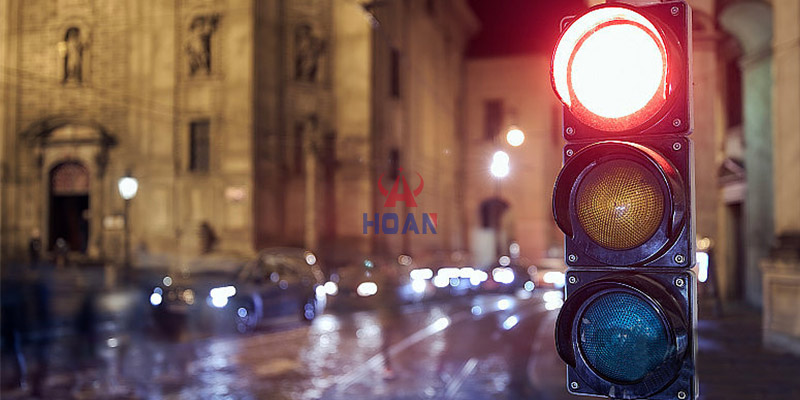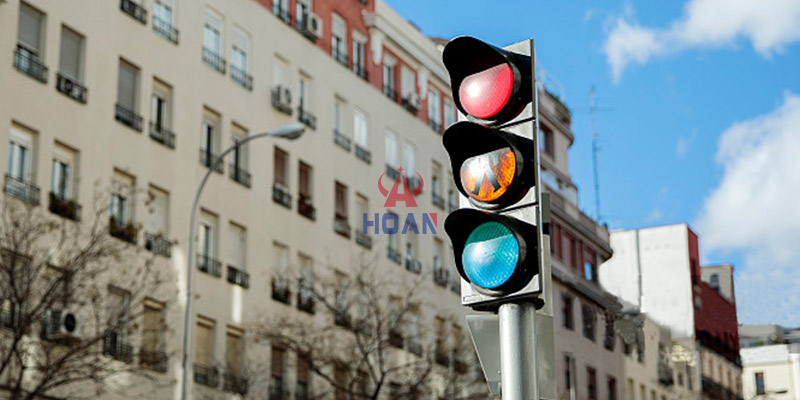Traffic lights are the most common ‘traffic controllers’ on the road. Whether you are driving, cycling, or walking, you interact with them every day.
Understanding traffic lights is not only crucial for ensuring your own safety while travelling but also the foundation for maintaining traffic order. They help every road user clearly understand their rules of conduct, preventing chaos and accidents.
The red light is the clearest prohibition signal. When the red light is on, vehicles must come to a complete stop behind the stop line and wait; they must not cross the stop line and continue forward.
For pedestrians, when the red light is on, they are prohibited from entering the pedestrian crossing to cross the road and must wait patiently at the roadside.
However, if a vehicle has already crossed the stop line before the red light comes on, it may continue to pass safely to avoid the danger of sudden braking.

The yellow light is a transitional signal indicating the change of the traffic light, serving as a warning. It signifies that the green light is about to end and the red light is about to come on.
At this point, vehicles that have already crossed the stop line may continue through; those that have not yet crossed the stop line should slow down in advance, prepare to stop, and must not accelerate to rush through.
It is important to remember that the yellow light is not an ‘acceleration signal.’ Rushing through the yellow light not only violates traffic rules but also greatly increases the risk of traffic accidents.
The green light indicates permission to proceed. Vehicles and pedestrians may proceed through the intersection in an orderly manner according to traffic rules when the green light is illuminated.
However, it is important to ensure safety while proceeding. Vehicles must be mindful of surrounding pedestrians and non-motorised vehicles, while pedestrians should also observe oncoming vehicles to avoid accidents caused by negligence.
Motor vehicle traffic lights are typically installed above or to the side of intersections, facing the direction of motor vehicle traffic.
When interpreting them, follow the instructions of the red, yellow, and green lights. Additionally, pay special attention to lane-specific signals, such as left-turn-only signals or right-turn-only signals, and follow the signals corresponding to your lane.
Pedestrian traffic lights are primarily located at both ends of pedestrian crossings for easy observation by pedestrians. In addition to red and green colours, some pedestrian traffic lights also feature a countdown display.
When the green light is on or displays the ‘pedestrian crossing’ symbol, pedestrians may cross the road; when the red light is on or displays the ‘no crossing’ symbol, pedestrians must wait at the roadside and must not force their way across the road.
Non-motorised vehicle traffic lights are primarily intended for bicycles, electric bicycles, and other non-motorised vehicles.
Their reading rules are largely consistent with those for motor vehicle traffic lights. Non-motorised vehicle drivers must follow the corresponding red, yellow, and green signals and also pay attention to the signals for dedicated lanes to ensure they remain within the designated lanes.
Arrow signals have a clear directional indication: left, right, and forward arrows correspond to the permitted or prohibited directions for left turns, right turns, and straight travel, respectively.
In such cases, arrow signals have priority over circular signals. Regardless of the status of the circular signal, drivers must strictly follow the arrow indications to avoid traffic conflicts caused by misreading the signals.
In areas with heavy traffic flow and complex intersection structures, multi-phase traffic signal lights are installed. These lights release traffic in different directions sequentially through multiple phases.
When encountering such signal lights, wait patiently for the signal light corresponding to your direction to turn on. Do not be distracted by signal lights for other directions; follow the sequence and proceed orderly to ensure smooth traffic flow at the intersection.
If traffic lights are malfunctioning, such as flickering or not lighting up, or if there are no traffic lights at an intersection, treat it as an intersection without traffic lights.
In such cases, strictly follow traffic rules such as ‘yield to the right’ and ‘turns yield to straight traffic,’ slow down, carefully observe the surrounding traffic conditions, and proceed cautiously only when it is safe to do so.

Many people mistakenly believe that a yellow light is an ‘acceleration signal’ and step on the accelerator to try to rush through the intersection when they see a yellow light, which is a very dangerous behaviour.
Some people ignore arrow signals and only look at circular signals, leading to driving in the wrong direction and disrupting traffic order.
Some pedestrians also jaywalk, assuming that vehicles will yield to them, unaware that this behaviour is one of the primary causes of traffic accidents.
When driving, observe traffic lights in advance. Begin monitoring the status of traffic lights at a certain distance from the intersection, preparing to slow down or stop in advance to avoid sudden braking.
Regardless of the traffic light status, always follow the principle of ‘slow down, look, then proceed,’ remain vigilant, and ensure safety before taking action.
For special groups such as the elderly and children, extra attention should be paid to understanding traffic lights. The elderly have slower reaction times, and children may not fully understand traffic rules. It is best for them to travel with an adult or only proceed after clearly understanding the meaning of the traffic lights.
Understanding traffic signals is a prerequisite for safe travel for every road user and is also a responsibility and obligation.
Only by strictly adhering to traffic signal instructions can we collectively create an orderly and safe traffic environment. Let us begin by correctly interpreting traffic signals, ensuring safe and civilised travel, and contributing our part to road traffic safety.